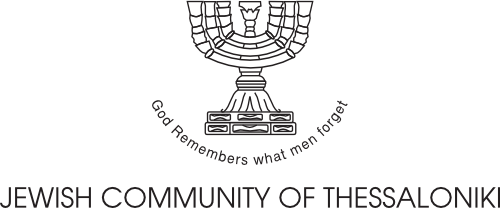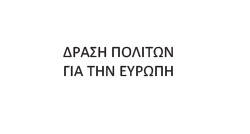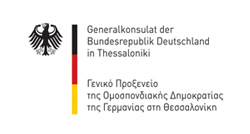“WWII Sites-Monuments-Museums: The case of Thessaloniki„
Introduction
"Make no mistake: the image we have about other people or ourselves is connected with the history we were taught when we were children. This history marks our entire life."
Marc Ferro
This section presents material on the sites, monuments and museums of Thessaloniki which are related to World War II. The corresponding lesson plan in the Greek language contains further material for use in the classroom by students acting as researchers. The selected material comes from various types of sources, primary and secondary, and aims at the reconstruction of history through subjective perspectives which humanise history. To this end, written and oral personal accounts are combined with historical texts, photos and other sources of that era. In this way, through "material events", as historian Todorov calls the various types of sources, and "memory traces" recorded in the memory of the people who lived through these events, we seek to achieve one of the many aspects and interpretations of history.
The city of Thessaloniki was selected as a typical example of a city that suffered German invasion and occupation, where the first resistance cores were created, a city that witnessed the imprisonment and executions of members of the Resistance in the camp of Pavlos Melas and the prison of Eptapyrgion that endured the famine and the black market. Thessaloniki was also selected because it was the home of the largest Jewish community in Greece, a community which was humiliated in the Liberty Square and suffered multiple blows, such as the destruction of their cemetery which was situated in the area of current-day Aristotle University before it was destroyed.
In the current day city some sites remain, but their distinctive course through history is not highlighted, while in others there is a minimal commemoration with monuments recently erected. Also, through the narrative of the Jewish Museum and the collections of the War Museum reconstruction of certain stories of the era is possible.
The sites in Greece which carry traces of the occupation are poorly researched, which is largely due to the civil war that followed the occupation. Therefore, collective historical memory is generated by the open national trauma and is partly based on oblivion and silence. It is the historian's and the teacher's responsibility not to leave the shaping of collective memory to chance or to political and other considerations, but to reveal the multiple aspects and perspectives, promoting a spirit of investigation and critical thinking towards any given interpretation. We hope that the given material serves this goal.
Main Body
Sites of imprisonment
Camp "Pavlos Melas"
General information
"In the late 19th century, large barracks were built in Thessaloniki in various open spaces outside the city walls. One of these barracks was the artillery barracks in the area of Camp Pavlos Melas, constructed between 1890 and 1905. [...]
During the German Occupation, the camp served as a prison and an execution hall. It became closely associated with the natural mound that stood opposite [...]. The mound was destroyed in the early 1960s.Those to be executed were lined up on its slopes. The relatives of the executed erected an informal cemetery in the soil of the mound. (Information taken from the archive of Spyros Lazaridis, teacher and member of the Municipal Council of Stavroupolis).
Testimonies recorded in the diary of Leonidas Giasimakopoulos, who fully describes life in the camp during the Occupation, while serving in death row, confirmed that in an area adjacent to the barracks lived those who were to be transferred to the concentration camps in Germany. "
EvangeliaKambouri, Head of the Ephorate of Contemporary and Modern Monuments in Central Greece. Former military sites seen as historical sites. The camps PavlosMelas and Kodra in Thessaloniki.
Accessed (07-03-2015) on portal.tee.gr
Written witness account of the hostage Leonidas Giasimakopoulos
Friday 07/02/43
I feel miserable; I was awoken at 4:30 a.m. by an unpleasant dream and filled with sorrow. At 5p.m.a tragic event took place. Three cars with members of the German Military Police wearing their service emblems (petals) arrived and took 32 prisoners under the accusation of communism from the camp to be executed. [...] The whole chamber is in deep mourning. The personal belongings of those taken for execution were recorded and then retrieved by the management. I am informed that the total number of those to be executed has risen to 50 as they also took 12 prisoners from the 510 German prison, and 6 from Eptapyrgio. The execution was retaliation for the murder of a German commander in Naoussa which was committed yesterday. [...]
Tuesday 27.07.43
Restrictive measures were imposed all day. We were only once allowed to wash ourselves, in the morning, for only 5 minutes. At noon food was distributed in silence. We were not allowed to go outside. The number of guards has doubled. And nobody knows why. In the morning,at7, at the mound situated just 70 meters from here, by the public road Lagkada, six prisoners convicted by the military court to death were executed. Ιt issaid that, Papadopoulou, also convicted and a former prisoner here, was also executed by axe. [...]
Thursday 10/07/43
[...]Late last night the conditions of the market became known in the camp. All essentials have run out. The prices, the nominal prices, are astronomical. For example: bread 6.5oo drachmas, oil 60.000 drachmas, white skim-milk cheese 48.000, cheese 80.000, butter 120.000,meat 22.000, cabbage 1.500,tomatoes 4,.00, milk 5.000, grapes 5.000,apples 5.ooo, etc. But what's worse is that there is no food. People have lost their patience. Unless things change, there may be riots against those hiding away essentials. Thus the life of Greeks proves problematic1. Dear God, save the people!
1 During the Occupation, Greeks did not only have to face the brute violence of the Occupying forces, the concentration camps, living under oppression, the tortures and the executions, but also the devastation of the Greek economy, starvation and extreme poverty [...].
Giorgos Kaftantzis (1999) The Nazi camp Pavlos Melas in Thessaloniki as experienced and described in the diary of a hostage, Leonidas Giasimakopoulos. Thessaloniki: Observer, pp. 29-30, 46-47, 60, 85-87, 106-107, 152-153.
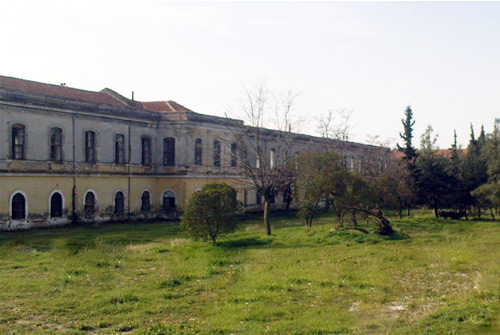
Image 1: One of the buildings of PavlosMelas camp nowadays. Accessed on http://www.avatonpress.gr/2014/11/blog-post_731.html
Greek Resistance
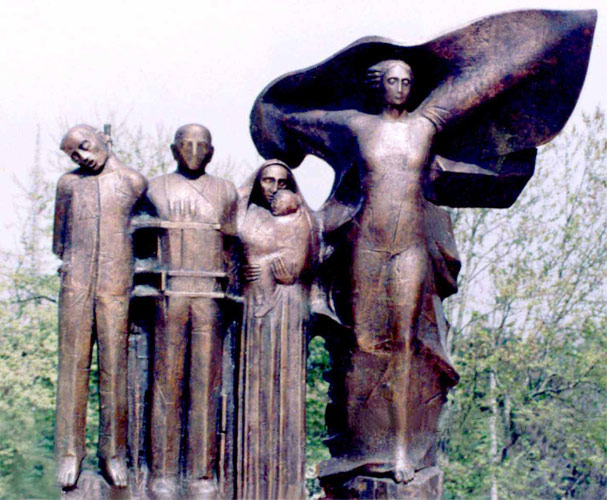
Image 1: The monument of the Greek Resistance on the seafront by the White Tower in Thessaloniki. Accessed on http://vagelismoustakas.com/en
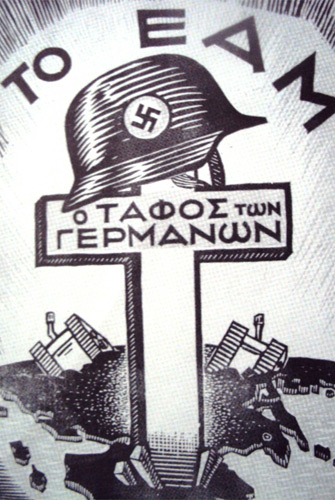
Image 2: Engraving by Vaso Katraki featured in the illegal publication of the National Liberation Front (EAM). Accessed on https://mauroflight.wordpress.com/2011/09/01/
Historical texts
Occupation and Resistance, 1941-1944
"The resistance was not limited in the organisation of armed struggle. For example, the circulation of an illegal publication against the foreign enemy was of great importance. It was no accident that the printers, editors and distributors of the illegal publication paid with their freedom or their lives whenever they would fall into the hands of the occupying forces.
The "illegal" publications, periodicals or other, offered great services to the national cause, boosting the morale of the "enslaved victors" and keeping any waverers from being overwhelmed by the quisling propaganda. They urged people to protest in one way or another in specific occasions and anniversaries such as March 25 and October 28. At the same time, they provided information to the majority of the people who did not have access to free news because of the German and Italian censorship of the "legal" press and radio stations in the country. "
Hagen Fleischer (2000) "Occupation and Resistance, 1941-1944" in the History of the Greek Nation, Vol. XVI. Athens: Athens Publishing, s.26. Accessed on http://www.greek-language.gr/Resources/literature/education/greek_history/index.html#prettyPhoto
Literature - Autobiographical texts
BITTER FREEDOM
Germans fleeing
On October 12, immediately after the burial of the rebels, I took the opportunity and left with a waggon from Gypsochori for Thessaloniki. When I arrived, after a very dangerous trip, with many stops, I went to Eptalofos to the home of a friend of mine, member of the EPON. There, I contacted the organisation and I was sent along with a girl, who we called Maddalena, to an estate outside Sykies. There, as in all the surrounding areas, the first groups of ELAS in Thessaloniki had started gathering, ready to take action for a smooth liberation.
The work I had been assigned was to transfer information and notes to other areas and often to the centre of Thessaloniki. (...)
Meanwhile, as days went by, the surrounding hills of the city were filled with young people who were coming to offer their services to ELAS, which was increasingly descending into the neighbourhoods.
Starting on October 22, all the people of Thessaloniki were on the go.
By October 26, a day which coincided with the celebration of the patron saint St. Dimitrios and the liberation from the Ottomans, Thessaloniki was experiencing days of unmatched excitement. Nobody feared the 35.000 Germans who had gathered in the lower part of the city anymore.
On that day, ELAS had all the districts of Thessaloniki under their control, all the suburbs, and guerrilla songs were echoing in the old city day and night. The Germans, who had meanwhile prepared for their retreat, had set up a number of diversions. So while the army was leaving Thessaloniki, their special units started blowing up parts of the city. (...)
Among the explosions, the blowing up of the electrical plant which was situated in Agios Dimitrios, near the vegetable market, was also planned. Backup ELAS had received orders to save the two power plants at all costs as well as everything else that could be salvaged from the sites that had been destroyed. So, when the Germans went by on a motorcycle with a sidecar towards the direction of the electrical plant on St. Dimitrios, the members of ELAS, who had advanced that far, shot them. As a result one of them was killed and the others were arrested. The blowing up of the plant was aborted and within minutes there was no trace of what might have happened. People emerged with water and brooms, washed the road and cleaned it. (...)
At Egnatia, in front of the Courts Square, some armoured vehicles and four tanks with their cannons facing the old town awaited them. They joined them and left Thessaloniki forever. Those were the last ones.
Their rear-guard, 60 tanks, several armoured vehicles, hundreds of cars with soldiers and trains crammed with military had started fleeing the previous night. But not as arrogant as they had arrived. They were heading to the station loaded with weapons, pulling carts with supplies for the road. Without formation, like a gypsy caravan, they were pulling their light cannons like mules. Those who witnessed this image felt the greatest satisfaction in their lives.
Eleftheria Drosaki(1985) In Thessaloniki: the war, the occupation and the resistance. Athens: Ulysses, pp. 122-123, 125-127.
Jewish Commemoration Sites
Liberty Square - Jewish Cemetery
Historical texts
Germans entered Thessaloniki on 09/04/1941. Two days later they banned all Jewish newspapers and on 15/04/1941 they arrested the members of the council of the community without any specific charges. (...)
During 1941 many Jews were murdered, among them employees of the US consulate. Even though these events forebode an ominous future, during the first 14 months of German Occupation no specific restrictive measures for Jews were implemented. (...)
The tough winter of 1941 was particularly difficult due to the hardships of war. During that time, 600 Jews died of starvation despite the fact that the old charity institute Matanot Laevionim and the Red Cross would daily distribute5.000rations as well as a quarter of milk to 1.700 children. This shows that Jews lived relatively calm and that the persecution had not yet started, even though the Gestapo would strictly supervise their activities. This was due partly to the confidence that General Tsolakoglou had inspired in the Germans, since he had publicly stated that there was no Jewish problem in Greece and that Greek Jews, who had the same rights and the same obligations as other Greeks, had proven their patriotism during the war. Those straightforward statements boosted the Jews' confidence and optimism.
This might explain their surprise about the order of 11/07/42 calling them to gather at Liberty Square as well as the large number of those who showed up. After all, even the head of the community who was collaborating with the Germans found out about the order from the newspaper. The 9.000 Jews who showed up were sent to forced labour in swampy areas where, under the supervision of Greek officers, they were supposed to build airports, roads and other infrastructure throughout Greece. In just one month the situation of the prisoners deteriorated to such an extent that Müller, the largest contractor of the Germans in Greece, ordered the head of the community to form a committee consisting of members of the community administration, which would be responsible for the medical care of workers who exhibited great mortality rates. (...)
Another 9.000 Jews were later recruited, while the community considered it a great success that control of the recruitment process was now in their hands. The amount each Jew had to pay in order to avoid being sent to a labour camp was set at one million drachmas. (...)
With the passage of time the situation of workers deteriorated to such an extent that Dr. Merten asked the community to pay him two billion drachmas as ransom, by December 1942. However, out of the blue and before the agreed deadline, Merten increased the ransom to 3.5 billion proposing to exempt all Jewish workers who had been recruited. Since the community was unable to collect this amount, Merten then adjusted the ransom to 2.5 billion and stated that instead of the extra billion, he would need to destroy the cemetery in order to use the area for the construction needs of the German army. Without obtaining the consent of the community, on December 6, 1942, workers of the Municipality under the supervision of the Germans destroyed one of the largest and perhaps the oldest Jewish cemetery in Europe, which held half a million graves. It seems that the Germans were fully aware of the fact that this way they would eliminate the most important testimony to the continuous and long presence of Jews in Greece. Jewish tombstones, of unique archaeological, historical and traditional value, were used for building purposes, among which for the construction of a swimming pool for the entertainment of the Germans. However, although the destruction of the cemetery was a tragic event for all Jews, this confirmed their conviction that they could overcome the problems created by the Germans with money. What they didn't know was that Eichmann had already planned their extermination since the summer of 1942.
Rena Molho (1994), "The Jewish presence in Thessaloniki", The Observer, Vol. 25-26, pp. 36-38.
Literature-Autobiographical text
The extermination of the Jews
(...) The Germans invaded Thessaloniki on April 9, 1941. One of their first measures was to ban the Jewish newspapers "Progrès" and "Indépendant"as well as the Spanish-Hebrew "Messagero". This measure was implemented rather carelessly, as the Greek newspapers "Macedonia", "Light" and "New Truth" were also banned. They were replaced by "New Europe" an intolerable Nazi paper, which fortunately counted just two pages. The requisitions of houses followed. This measure did not concern only the Jews, of course. However Jews, in the event of a requisition, were not allowed to take their belongings from their house.
On Saturday, July 18, 1942, at 8 a.m., all male Jews between 18 and 45 were gathered at Liberty Square, which was surrounded by machine guns. They were held there without explanation, in the sun, standing, without any shade, thirsty, until 2p.m. Anyone who dared sit was severely mocked. In the following days, when they were gathered once again, it became apparent that this was all in fact a census, which would end with Jews being sent to forced labour, however on the first day they had been humiliated without being offered any information. The news spread around the city. Thousands of Jews were sent to forced labour and many of them never came back. But most of them were released after astronomical sums were paid by the Jewish community. The great regulator of the life and fate of the Jews during that time was Dr. Maximilian Merten, a war adviser, who had the audacity to visit postwar Greece, and almost bring down the government with his revelations about war collaborations (...).
1943 was a bleak year. On February 6, a Saturday, Dieter Vislitseny, leading a five-member committee of S.D., arrives in Thessaloniki. "Proper monsters", is noted in the book. It's them who, along with Merten, the "Doctor", will organize the evacuation of the Jews towards the end of their extermination.
During their meeting it is decided that the laws of Nuremberg will be implemented without further delay: Jews will bear the Star of David. Signs will be erected in their shops and in their homes. Ghettos will be created, that is areas inhabited only by Jews(...).
Giorgos Ioannou(1980).Our own blood. Athens: Kedros, pp. 51-69.
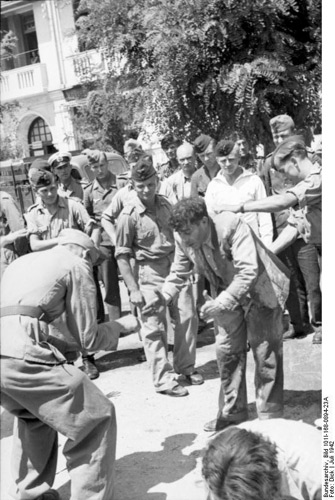
Image 1: “Black Saturday”, July, 11 1942. Jews were publicly ridiculed, forced to exercise during the mandatory census at the Liberty Square in Thessaloniki © Bundesarchiv.
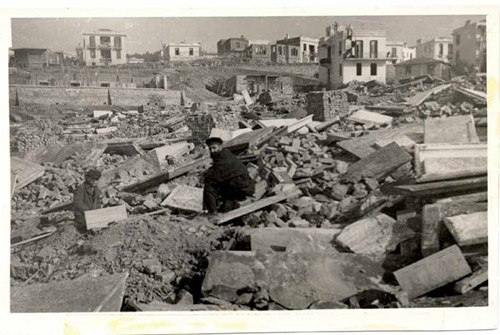
Image 2: Ruins of the old Jewish cemetery, summer 1943, Thessaloniki, YadVashem archive.
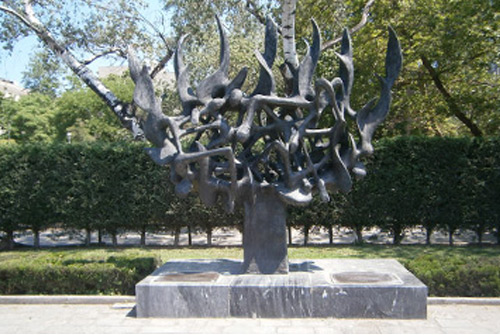
Image 3: The Holocaust Museum in the memory of the Greek Jews of Thessaloniki which perished in the Nazi camps of death, situated at the Liberty Square, where it was transferred in 2006.
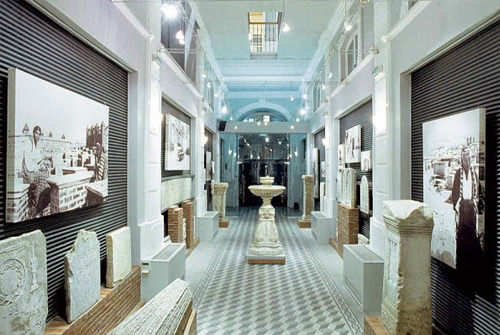
Image 4: The Jewish cemetery section in the Jewish Museum of Thessaloniki consists of only a few tombstones which were salvaged and photographs of the time.
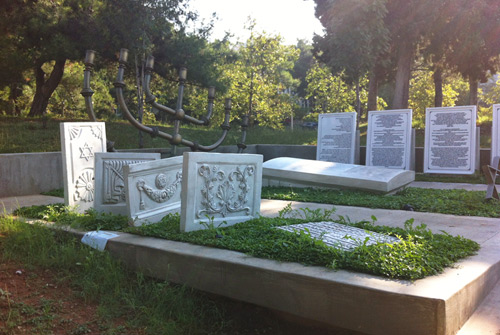
Image 5:The monument which was unveiled in November 2014 in an open space of the Aristotle University of Thessaloniki campus in commemoration of the old Jewish cemetery.



